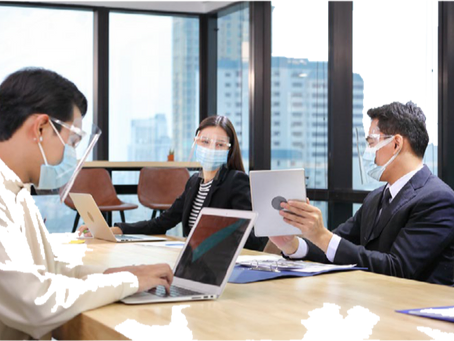The Covid-19 pandemic imposed enormous challenges on health care institutions and their workers regarding workers, and these challenges varied between administrative, operational, logistical, medical, and personal.
It has been proven that the most important elements for successful dealing with these issues is effective communication. It was noted that the medical organizations that were proactive in improving communication at all levels of the organization have provided better performance during the current crisis. It was able to perform its functions more effectively, respond to emerging needs more efficiently, maintain cohesion among team members, reduce health worker fatigue, and provide better continuity of patient care.
Healthcare organizations communicating effectively during a pandemic are advised to employ some of the following basic strategies:
1. Establishing a central communications “leadership”:
Most healthcare organizations have set up teams to respond to the COVID crisis. These teams work closely with broader teams in the community to prepare status updates. These teams understandably live in a crisis situation, preoccupied with ever-changing data and requirements that must be applied on the ground.
It is essential for these teams to keep in mind that their efforts will be as good as their work in informing employees of these ongoing changes.
2. Not tolerating continuous communication between employees:
Amid the daily pressures and ever-changing landscape of the pandemic response; Communication is usually lost. People assume that information has already reached others, but it often does not arrive at the right time.
It is essential to establish good and effective communication chains. The chain of command must also become more flexible to allow for more efficient operation and communication. We may need periodic publications to appear on websites so that frontline workers can access them immediately. Written communication must also be enforced by immediate verbal communication.
3. Maintaining the flow of information to patients as situations change:
Non-COVID patients are having a hard time during the pandemic, due to limited access to care. Outpatient teams have an important role to play in protecting patients by providing continuous care, and constantly informing patients of their options during crises.
4. Start “what if” conversations now.
The ever-changing challenges and uncertainty of when this pandemic situation will end requires healthcare organizations to be proactive, anticipating future challenges and making plans to address them.
5. Listen
Different operational requirements during the pandemic have placed the burden on some healthcare workers more than others. It has also left a segment of healthcare workers in a position that is less informed about the crisis situation and appears to act or act less. Conducting a virtual meeting to provide relevant updates to all employees and to allow questions is a good way to bridge communication gaps between all employees and allow them to be active members of the organization’s efforts in the multifaceted fight against COVID-19.
6. Tell your team to take care of themselves
People respond differently to the pressures and stresses of the current situation. Extroverts vs. introverts, type A vs. type B, expats vs. locals, onsite vs. remote workers, single vs. married, will all experience different types of stress.
Don’t underestimate the importance of rest, hydration, sleep, and the well-being of your team. It is important for employees as well as doctors and other service providers.
Take simple steps now to ensure doctors and staff take care of themselves in the coming weeks and months. Make it clear that no one will be looked down upon if they are unwell and need to express illness. See the number of hours doctors and other service providers work. Encourage him to sleep.
a
Previous article
Exploratory study: The concept of schizophrenia disorder among a sample of medical students
Next article
Dealing with changes and crises
admin


